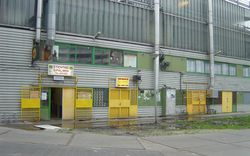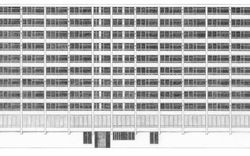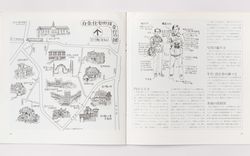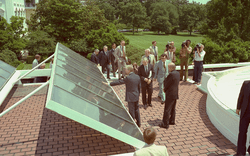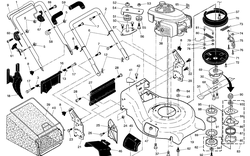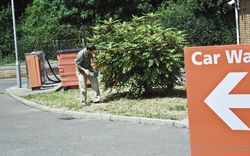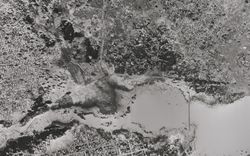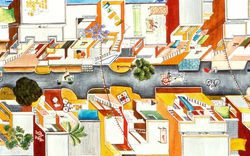Architecture after the Front Lawn
Text by Fritz Haeg
The standard grass lawn is the ultimate example of the unconsidered and subservient landscape to the dominant building. North America’s nearly ubiquitous domestic front lawn in particular developed as a means to display the home and, hopefully, impress the neighbours. We have dedicated millions of acres to this sterile monoculture, whose main requirement is to lay low and make our buildings look good. And the truth is even more insidious than that. For a lawn to be “healthy” other forms of life must be eradicated, drugged with chemicals that are immediately washed into our water supply, irrigated by our increasingly precious fresh water, and spewing the pollution emitted by two-stroke mowers. Of course there are the delightful and gracious lawns that are thoughtfully provided for recreation, but the domestic front lawn is rarely used in this way. It is usually only occupied by people when it is being mowed, groomed, watered, weeded, or fertilized.
The front lawn is an inherited, default, habitual space that we continue to plant and tend in part because it is what we know, and all its convenient support systems are in place. This private space that we offer up to the public street may officially be the property of the homeowner, but it is not that simple. In reality, this is a private space with public responsibilities. If you don’t tend your lawn “properly,” you risk not just the reprobation of your neighbours, but actual penalties: in many municipalities there are bylaws governing how you must keep your lawn. Each front lawn is part of a connected network of other private front lawns, independently tended, one house next to the other, creating a grand continuous zone of ornamental space, cutting across all religious, economic, geographic, and political boundaries. This already existing system of many individuals working independently side by side represents a unique opportunity for a dramatic reimagining of our cities and how we live. With a collective will, each plot in this highly visible zone could be reconsidered independently, house by house, without bureaucracy, additional taxes, or legislation from above.
Read more
I am interested in this simple, radical, and vivid transformation in terms of the problem it solves, but more importantly for what it represents at the highest levels of society. We have a choice about how we want to live, and what we want to do with the cities we have inherited from previous generations. No matter what has been handed to us, each of us should be given licence to be an active part in the creation of cities that we share. The most effective responses to our current urban and global challenges will be a strategic combination of both timeless forms of human activity, such as gardening, with the responsible application of the latest technologies. I would venture to say that gardening is not taken seriously as a rigorous form of urban design and architecture, or as the radical form of political activism that it could be. But I believe that this most primitive form of human activity, when strategically applied to our cities, may become the most cutting edge and sophisticated form of architecture that exists.
Between the utopian fantasy of starting over, and the impossible dream of continuing in the direction that we are headed, there lies a middle ground in which we come to terms with the urban decisions that have already been made, and repurpose aspects of our existing built environment in strategic ways. Before we spread out further, how can we make more use of the land that we have already claimed? How can we reconsider this space of the front lawn as more than just a landscape of high-maintenance ornamental vanity? What are the practical and social functions that we can assign this space that also have pleasurable by-products? The answers should be as diverse as the locations, the land, and the people who tend it. This may include anything from low-water xeriscapes and a diverse planting of natives, to verdant meadows and even phyto-remediation gardens that cleanse toxic dirt. My ongoing project, Edible Estates, proposes, in the spirit of wartime victory gardens, the replacement of the front lawn with a diverse edible landscape of vegetables, fruits, and herbs. A highly visible space that was mostly unoccupied, time-consuming, polluting, wasteful, and even socially divisive is transformed, with a little gardening and good will, into a productive space that feeds families with the healthiest local food while reconnecting them to their environment and neighbours.
As a rule, architects tend to be narrowly focused on buildings: objects on the landscape made of mass-produced materials containing a series of enclosed spaces. This may seem obvious, but as our society evolves, what are the alternatives? Imagine a future with a more expansive notion of architecture that views a building as just one of a spectrum of possible responses to an architectural problem, or perhaps that views buildings and landscapes not as separate pursuits, but rather as inseparable parts of a holistic continuum of human constructions.
Fritz Haeg is an artist and activist whose activities include design, gardening, performance, and ecological problem solving. This text was first published in Actions: What You Can Do with the City, a book we produced in 2008.


